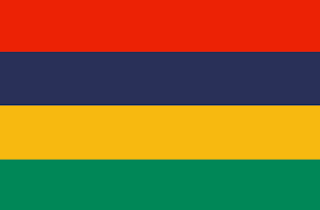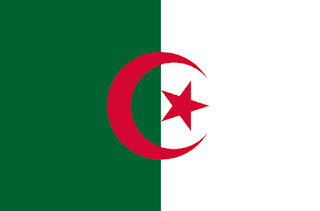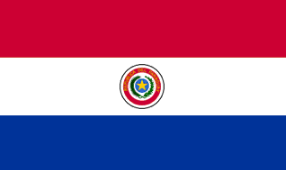FACTS ABOUT MAURITIUS
AMAZING FACTS ABOUT MAURITIUS
1.
Port Louis is the capital city of Mauritius.
2.
The
total population of Mauritius is 1,356,388.
3.
The
natives of Mauritius are called Mauritians.
4.
The
Mauritian rupee (MUR) is official currency of Mauritius.
5.
The
literacy rate of Mauritius is 92.7%.
6.
Mauritius
was uninhabited by humans until the Arabs landed there in the Middle Ages. They
called the island Dine Arobi. The Portuguese came next, calling the island
Cine.
7.
The
Dutch Republic established a colony in 1638, naming it after Prince Maurice van
Nassau. This colony lasted until abandoned in 1710.
8.
Five
years later the island became a French colony named Isle de France. Due to its
strategic position the island was known as the “star and key” of the Indian Ocean.
9.
As
an important base on the trade routes from Europe to the East before the
opening of the Suez Canal, it was fought over by the French and British during
the Napoleonic years.
10.
Though
the French won the naval battle of Grand Port, the British forced the surrender
of the island three months later in December 1810. The French settlers were
allowed to keep their land, French language and French laws.
11.
Under
British rule Mauritius became the Empire’s main sugar-producing colony. When
slavery was abolished by Parliament in 1835, the planters received compensation
for their African slaves.
12.
The
planters then brought in a large number of indentured laborers from India to
work the sugar cane fields as well as almost 9,000 Indian soldiers.
13.
In
1872 two lawyers were sent from England to form a Royal Commission. They
recommended measures that positively affected the lives of those Indo-Mauritian
laborers over the next 50 years.
14.
Mahatma
Gandhi visited the island in November of 1901 and encouraged these workers to
become more active in issues affecting their well-being.
15.
Universal
adult suffrage was instituted in March 1959. The country became an independent
state in March 1968 and a member of the Commonwealth of Nations in 1992.
16.
The
Republic of Mauritius is composed of that island as well Rodrigues, Agalega,
and the Saint Brandon archipelago.
17.
Mauritius
itself is encircled by a broken ring of mountain ranges composed of extinct
volcanoes, streams, waterfalls and rivers, all covered in forests.
18.
Its
surrounding lagoons are protected from the open sea by the world’s third
largest coral reef, which surrounds the island. These reefs protect beach goers
from attacks by sharks and jelly fish. There are 93 miles (150 km) of white
sandy beaches on Mauritius.
19.
The
warmest months are January and February. The coolest months are July and
August. The best months to visit are from May through December.
20.
Several
tropical cyclones generally hit the island between January to March annually.
21.
Prevailing
trade winds keep the eastern side of the island cooler and cause more rainfall
there than elsewhere on the island.
22.
Only
two percent of their natural habitat remains so many of the 700 species of
indigenous Mauritius plants are threatened with extinction. Introduced plants
and animals compete and destroy their seedlings and fruit.
23.
Through
the Mauritius Wildlife Fund, the island has worked hard to become an
international standard for the protection of endangered species and natural
resources. Some of the world’s rarest birds are here, including the Pink
Pigeon.
25.
The
50 pound Dodo had no predators to attack them and gradually they lost their
need (and therefore their ability) to fly.
26.
As
Mauritius became a stopover for sailors and their ships on the spice trade
route, the Dodo provided much appreciated fresh meat for the men on their
layover.
27.
When
the Dutch settled on the island, their ships brought rats, pigs, and monkeys to
the land. These animals hunted and ate the Dodos’ eggs from their ground nests.
Eating the eggs and the adults significantly reduced the Dodo population.
28.
Within
a hundred years of the arrival of man the once plentiful Dodo became a rare
bird. The last one was killed in 1681. Today it is the national bird of the
country, even though it is extinct.
29. Mauritius
has the highest population density of any African country. The multiethnic
population features Indian, African, European (predominantly French) and
Chinese people.
30.
French
and English are both spoken here, but the mother tongue of most of the
islanders is Creole, a patois of French.
31.
Though
many of the people look and dress like Indians, they don’t speak the language.
Mauritius is the only country in Africa where Hinduism is the dominant
religion, however.
32.
Sugar
and tea exports are the mainstays of the economy, with tourism second.
Mauritius received the World Leading Island Destination Award three times this
decade.
33.
Plans
are underway with assistance from India and Japan to revitalize the island’s
fishing industry.
34.
The
capital city is Port Louis. This is the country’s economic hub and is home to
over 40 percent of the country’s population.
35.
Public
and national holidays revolve around Hindu, Christian, Muslim and Chinese
religious festivals.
36.
Mauritius’
cuisine is a combination of Creole, French, Chinese and Indian influences.
Spices are an important part of all dishes.
37.
Mauritian
poet and playwright Dev Virahsawmy has translated several of Shakespeare’s
plays into Mauritius’ Creole. These have been performed in the island’s
theater.
38.
‘Sega’ is the national folk dance of
Mauritius. Its African origins can be traced back to the 18th century when it
was performed by slaves as a way to forget their miserable existence.
39.
Today
the sega is known for expressing ‘joie de vivre’. While the whole body gyrates
to the traditional instruments of the ravanne, the naravanne and the triangle,
the feet never leave the ground.
40.
Contemporary
musical now influences variations on the types of sega performed. For example,
when reggae is used as the background music this fusion is known as ‘seggae’.
41.
Football
(soccer) is the favorite national sport and the national team competes in the
African Cup of Nations Tour.
42.
The
Franco-Mauritian is an organized, ritualized deer hunting season for sportsmen.
43.
Winter
horse racing is one of the most popular and highly attended sporting events of
the islanders’ year.
44.
Water
sports such as scuba and snorkeling, water skiing and sailing, are popular
activities. Balaclava, Blue Bay, Rodrigues Island, Belle Mare, Flic en Flac,
Pereybere, and Trou aux Biches are key sites for these activities.
45.
Ile
aux Cerfs is a tiny leisure island but it has a gorgeous beach and is a
paradise for water sports. Lying off Trou d’Eau Douce in Mauritius’ largest
lagoon, it has an adventure park, an 18-hole golf course and beach restaurants
as well.
46.
Grand
Bay is the place to check out for restaurants, nightlife, discos and late night
fun.
47.
On
Rodrigues Island the Blue Bay beach of Trou d’Argent has crystal clear water
and is very quiet. It is an ideal spot for sailing and windsurfing.
48.
At
Pereybere public beach tourists can do everything: sunbathe, sail, go tubing,
ride paddle boats, and snorkel. The white sand is very soft and the water is a
beautiful turquoise. Shops and restaurants are close at hand.
49.
Other
popular beaches include Le Morne, Mont Choisy (with readily available water
sports), and Flic en Flec Beach with its beautiful shade trees.
50.
Visitors
can drive or hike to Les 7 Cascades – seven different waterfalls near temples
and sugar cane fields. One is a few miles from the Seven Colored Earth. Take a
guide along to enhance your experience.
51.
The
Seven Colored Earth is a famous Mauritius attraction. This section of open land
consists of sand dunes in seven different colors: brown, red, violet, purple,
blue, green and yellow.
53.
Mauritius
is home to the oldest Botanical Garden in the Southern Hemisphere. The SSR
Botanic Garden date back to the French period in the 18th
century and is home to vegetables, fruits, flowers and spices from all around
the world.
54.
At
the Frederica Nature Reserve you can take in breathtaking views, swim in a
waterfall and hike, go quad biking or take a buggy safari 4 by 4 with a guide.
55.
There
are two UNESCO World Heritage sites in Mauritius.
56.
The
other is Mont Le Morne Brabant. A popular climb for its breathtaking views,
this mountain was a place of sanctuary for escaped slaves known as maroons
during the 18th and early 19th centuries. It is one of the wildest and most
preserved mountains in the country.
57.
The
Black River Gorges National Park in the southeast part of the country is filled
with hiking trails for the outdoor enthusiast.
58.
Visit
Château de Labourdonnais and see a beautifully restored 1859 mansion. Stay and
taste products made on site such as rum, fruit juice, fruit paste and jam.
59.
Mauritius Exports: clothing and textiles, sugar,
cut flowers, molasses, fish and primates (for research).
60.
Mauritius Imports: manufactured goods, capital
equipment, foodstuffs, petroleum products and chemicals.
61.
The
internet country code for Mauritius is .mu.







Comments
Post a Comment